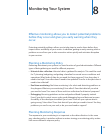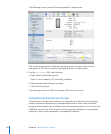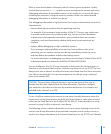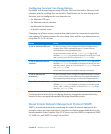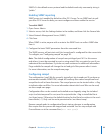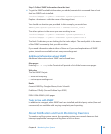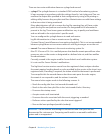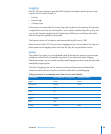
Setting Up a Core Dump Server
You can use any Mac OS X v10.5 or later computer to be a core dump server that ts
the following criteria. The core dump server must:
Have a static IP address. Â
Be IPv4 network-accessible to all clients using UDP port 1069. Â
You cannot put the core dump server behind a rewall or NAT unless all clients
using it are also behind it. You cannot use IPv6-only addresses for the server.
Have enough disk storage space for multiple dumps. Â
In general, core dumps are large. Core dumps can be as small as 200 MB to 500 MB
but they can be much larger, depending on the kernel map size, physical memory
size, memory usage during the panic, and other factors. Make sure you have enough
free disk space.
To set up a core dump server on a computer running a system earlier than Mac OS X
v10.5, more extensive conguration is needed. See Developer Technical Note #2118at
developer.apple.com/technotes/tn2004/tn2118.html.
Setting up a core dump server:
1 Create a core dump directory named “PanicDumps,” owned by user “root,” and group
“wheel,” which is writable by everyone.
Using the command line, type:
sudo mkdir /PanicDumps
sudo chown root:wheel /PanicDumps
sudo chmod 1777 /PanicDumps
2 Activate the core dump server process (kdumpd).
Using the command line, type:
sudo launchctl load -w /System/Library/LaunchDaemons/com.apple.kdumpd.
plist
After this command is executed, the core dump server process starts. This step does
not need to be repeated when the server restarts.
3 Verify that the core dump server process is running.
Using the command line, type:
sudo launchctl list | grep kdump
The result should list com.apple.kdumpd.
4 Make sure UDP port 1069 is open for core dump connections.
When the core dump server is active, congure Mac OS X computers as clients to send
their kernel panic information to this server. See “Setting Up a Core Dump Client” on
page 179.
17 8 Chapter 8 Monitoring Your System




